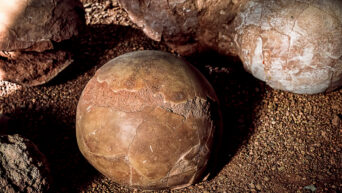A science textbook looks very different today compared to ten years ago.
New technology and discoveries will always keep science fresh. But there are some scientific facts that people have learned in school that are no longer true.
The T-Rex Resembled What We Saw in Jurassic Park
A full-grown T-Rex was about 43 feet long and weighed between 6-9 tons. In the movie, the ferocious animal was seen sprinting through the park at ridiculous speeds. A T-Rex always needed to have one leg on the ground, so it could never reach the speeds that people believed it could. As for the booming voice, a 2016 study suggested that the animal probably sounded like the modern-day emu.
Camels Store Water in their Humps
Those big, old humps are loaded with fat, not water. The camel burns that fat for fuel as it travels long distances. That fat can be used in place of three weeks’ worth of food. As far as water is concerned, camels have oval-shaped blood cells that are more flexible than the average blood cell, allowing them to store water longer.
Bats Are Blind
Remember the old saying, “blind as a bat?” That is simply not true. Bats rely on echolocation to navigate. They are very sound focused and will move towards the sounds they hear, but their eyes work just fine.
Milk is Good for Your Bones
For years, people have believed that three cups of milk a day was a necessity for calcium and vitamin D to grow strong bones. Multiple studies have shown that there is no connection between the two. People who drank more milk were not experiencing fewer bone fractures. The USDA’s website changed its three-cup minimum to now include the whole dairy category, not just milk.
Crunches and Sit-Ups Are Good for Your Core
Crunches are not efficient for building your core and can actually damage your back and neck if done wrong. People perform these exercises too quickly and use their hip flexors, which tilts the pelvis in a way that increases stress on the lower back.

































